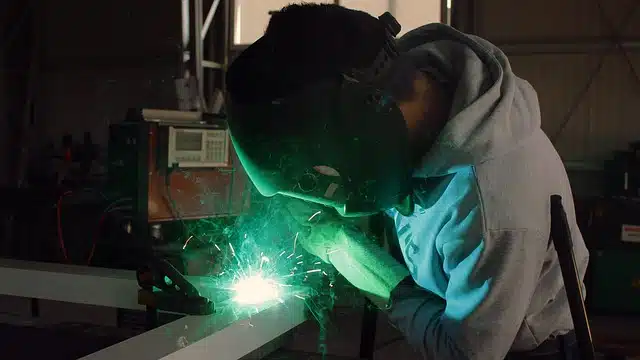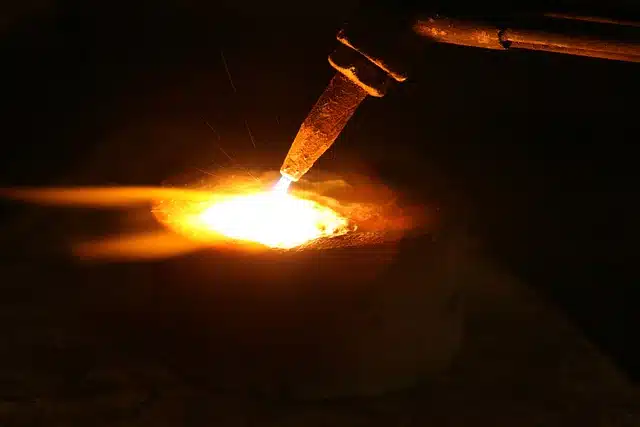
A weld allows forging a solid joint between two elements
The first meaning of the term welding that is mentioned in the dictionary of the Royal Spanish Academy ( RAE ) refers to the process and result of welding : establishing a solid union between two things with a material that is similar or the same as theirs. In a broader sense, welding is to mend or repair something .
A weld, therefore, involves the union of two elements: it is usually done through fusion . It is common for a plastic or metal to be added that, when melted, ends up joining both pieces. This added material makes the joint stay fixed when it cools.
Some welding issues
To achieve fusion and perform welding, it is possible to use a laser , ultrasound , a gas -generated flame, electric arc or a friction process, to name some of the available options.
It is important to highlight that, due to the characteristics of the work, various precautions must be taken when welding. Welders should protect their eyes and hands to avoid burns and damage from ultraviolet light. Sometimes welding also produces toxic smoke, a feature that requires preserving the respiratory tract.
The quality and durability of the weld depends on various factors. Among them we can mention the concentration used in the heat input, the type of material that was added, the design given to the splice and the method chosen to perform the welding.
Although welding is one of the most common processes in the industrial field, it also occurs in particular environments and can be carried out with very economically accessible elements. Regarding the environment in which it is possible to weld pieces, there are not many limitations, since it can occur in a closed environment, outdoors, under the sea or in outer space.

It is possible to perform welding using a flame generated with gas.
Different systems
Let's look at some of the welding systems below:
* solid state : one of the obvious characteristics of this system, as opposed to the better known ones, is that it does not require melting any material . Among the methods that are part of this group is ultrasonic welding, which is used to join fine wires or sheets whose manufacture is carried out with thermoplastics or metal. To get them to connect, they are subjected to high-frequency vibration and high pressure;
* by arc : in this case, when talking about this system we are recognizing several that are grouped by using a source of electricity to achieve welding. Thanks to the electrical power it is possible to produce an electric arc between the base material and an electrode, so that the metals melt. There is the possibility of using alternating current ( AC ) or direct current ( DC ), as well as consumable or non-consumable electrodes, which are under a coating;
* soft and strong : they are two individual processes that are distinguished from the previous ones by not providing the union of the base metals, but only the filler metal. On the other hand, it is also important to note that it was the first system to be used by our species, and it dates back to ancient Sumeria. The temperatures used in both cases have a starting point of 450 °C: soft welding occurs below it and strong welding occurs above it. There is also strong high temperature welding, a type of welding that requires exceeding 900 °C;
* gas : in this group, oxyacetylene welding stands out, and it is one of the oldest processes, currently used especially for joining pipes .
